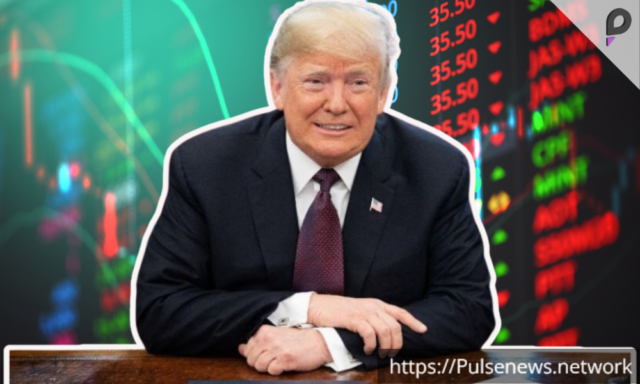Washington: Markets trim losses after Trump Mexico tariffs pause, bringing relief to global investors. The financial markets stabilized after a sharp sell-off, following an agreement between the U.S. and Mexico. Mexican President Claudia Sheinbaum announced that her government had reached a deal with U.S. President Donald Trump to suspend tariffs on Mexican goods. Trump confirmed the news, easing investor concerns about an escalating trade war.
Markets Recover from Early Losses
The announcement helped U.S. stock markets regain some lost ground. After opening more than 1% lower, the Dow Jones Industrial Average trimmed losses to just 0.3%. Despite the recovery, investors remain cautious about potential trade disruptions.
The U.S. dollar surged in currency markets, hitting a record high against China’s yuan. Meanwhile, the Canadian dollar dropped to its lowest level since 2003. European and Asian markets also suffered losses before recovering slightly.
Stock Market Reactions
- The German and French stock markets fell more than 1.5%.
- The UK’s FTSE 100 index dropped 1.4%.
- Automakers like Toyota, Honda, VW, and Stellantis saw sharp declines.
- U.S. tech giants such as Apple and Nike, which rely on China for production, also faced steep losses.
Trump’s Tariffs and Global Trade Impact
Over the weekend, Trump announced new tariffs:
- 25% on imports from Canada and Mexico, set to start on February 4.
- 10% on Chinese goods, adding to existing duties.
- A warning that tariffs on EU goods would “definitely happen.”
These moves targeted America’s three biggest trade partners and sparked fears of economic disruption. Canada and Mexico vowed to retaliate, while China promised countermeasures and a World Trade Organization challenge.
Mexico’s Deal with Trump
In a swift turn of events, Mexico and the U.S. reached an agreement to delay the tariffs for one month. As part of the deal, Mexico committed to sending 10,000 troops to its border to address migration concerns.
Despite this temporary relief, uncertainty remains. Trump reiterated that tariffs on the European Union were still on the table. He also suggested that a deal could be reached with the UK, but talks were ongoing.
Investor Concerns Over Economic Growth
Financial analysts warned that trade tensions could hurt business confidence and slow economic growth.
Russ Mould, investment director at AJ Bell, said markets were flashing a “sea of red.” He cautioned that higher tariffs could:
- Increase inflation.
- Halt expected interest rate cuts.
- Weaken consumer demand.
Stronger Dollar, Rising Oil Prices
The possibility of prolonged trade conflicts strengthened the U.S. dollar, pushing the euro to a two-year low. Oil prices also climbed, as traders assessed how tariffs on Canada and Mexico—two key U.S. oil suppliers—might impact the market.
Long-Term Trade Risks
While Trump argues that tariffs benefit the U.S. economy, experts warn of long-term consequences. Charu Chanana, chief investment strategist at Saxo Bank, said, “Repeated use of tariffs may push other nations to reduce their reliance on the U.S., ultimately weakening the dollar’s role in global trade.”
Conclusion
The U.S.-Mexico deal provided temporary relief, but trade tensions remain high. Investors are watching closely as Trump prepares for further talks with Canada, Mexico, and the EU. With global markets still volatile, uncertainty over future tariffs continues to loom.











